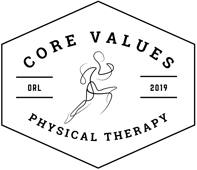Formerly known as the Female Athlete Triad, RED-S has been updated to include males and also takes into consideration that many females are maintaining normal menstrual cycles with oral contraceptives, so a loss of a menstrual cycle as inclusion criteria is no longer valid.
Relative Energy Deficiency in Sport, or RED-S, describes an energy deficit where an athlete is burning more fuel (calories) than they are taking in; as well as the subsequent consequences associated with this deficit.
Think of your bank account and imagine a mismatch between money going in and money coming out. If you don’t have the money available you will have to borrow it from somewhere else.
In regards to your body, when energy intake is less than energy expenditure, some part of you is paying the bills: it could be that bones are not reforming, glycogen is not being replenished or tendons are not healing. You may not notice the damage in the short-term, but there will be a consequence eventually.
There are a few different scenarios that can land an athlete in this situation which are mostly unintentional. These may include a restrictive diet, disordered eating patterns or excessive exercise. Even a deficit of 250-400 calories/day for 5 days can contribute to hormone dysfunction!
Common symptoms to look out for that can signify RED-S are:
~Decreased concentration and coordination
~Missed periods
~Increased injuries
~Impaired judgment
~Depression and or anxiety
~Decreased muscle strength
~Decreased endurance
~Loss of sex drive
~Decreased immunity
~Decreased protein production
~Compromised cardiovascular system
~Decreased energy stores
~Changes in mood
~Changes in libido
~Bone density changes
~Changes in hormonal reeducation and reproduction dysfunction
~GI upset
Males have slightly more wiggle room than females. Female bodies are more protective of the reproduction role and if body fat drops, hormones will be affected.
Negative training effects are noticed faster in males than females, speculation that this can be due to statistically higher training volumes in males vs. female counterparts. Whereas, females tend to get a majority of the medical symptoms.
Unfortunately, there are a lot of contributing factors for which people unintentionally fall into this trap. The major one being that there is not a lot of accurate information when you research your body’s needs. If you google resting metabolic rate, which is a baseline caloric need of someone at rest, for a 25 year old female it can range anywhere from 1800-2500 calories. Which is a huge range!
We start to see hormonal dysfunction occur within as little as a 250-400 calorie deficit, over the span of 5 days, so you can easily see how people slip into a calorie deficit that can cause problems, without even realizing it.
One suggestion would be to get regular blood work to see what their Vitamin D, Iron, calcium and baseline hormone levels are. Bloodwork is a great measure of overall health and nutritional levels for vital vitamins, hormones and nutrients.
Athletes also need to keep an eye on their ferritin levels which is not always included in a regular blood panel. Ferritin is the iron storage protein. Anemia can occur when there is a low hemoglobin level, which carries iron, or in Ferritin. Anemia can have a profound impact on training and performance. Notably, when iron is low, you put your body into an anaerobic state, which means you have to burn more fuel to maintain your resting metabolic rate. Ironically though, your appetite goes down when you’re anemic, despite your increased needs.
Rebecca McConville, a sports nutritionist and performance expert, recommends athletes get blood work done before starting a training block as well as 2 weeks after a big race to see how the nutrition plan for that training cycle worked.
Overall, guessing can be dangerous or harmful to your health and performance. Your best bet is to stay informed and be proactive by:
~Getting regular blood work done
~Doing the math on your specific caloric needs by calculating your fat free mass and using the following formula: Energy available (goal is 30-45) Energy Intake (EI), Energy Expended (EE), Fat-free mass in kg (FFM)
EA = (EI-EE)/FFM (in kg)
For example a 154 pound runner, 18% body fat, 126 pounds FFM or 57kg
EI = 2800, EE = 800 so the EA would be 35
(2800-800)/57 = 35
OR
EI = (EA x FFM) + EE so if a goal is to be at 40 for EA
EI = (40 x 57) + 800
EI should be roughly 3,080 calories
~Eating a whole food balanced diet and not restricting certain food groups (unless you have an allergy or have been advised by a doctor or dietician and work directly with a registered dietician to know exactly what your needs are.)
To conclude with some wise words from Rebecca McConville…“What’s the downside to being fed?”



